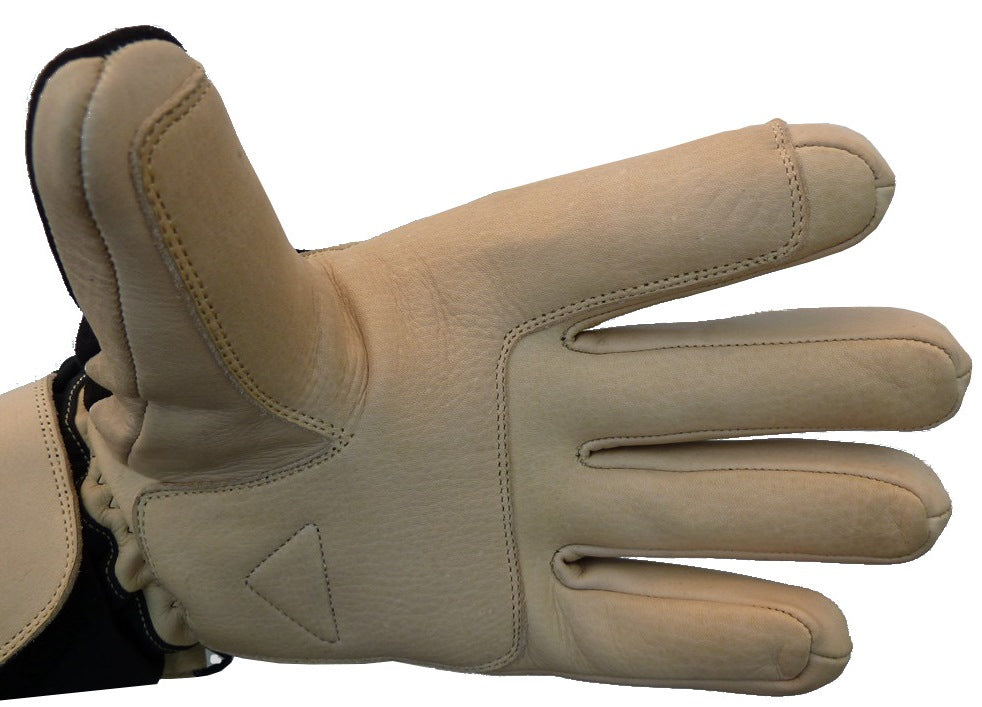How Leather is Made for Ski Gloves
Leather is made by a process known as tanning.
In ancient history, leather tanning was considered a very dirty, noxious, and toxic undertaking, relegated to the poorest areas on the outskirts of towns and villages. Even today, leather tanning by ancient methods is so foul smelling that tanneries are still in isolated locations away from populated areas.
In the ancient world, leather tanners would soak the skins in water to clean and soften them, before scouring the last bits of flesh and fat. Next, the tanner would remove the hair by soaking the skin in an alkaline lime mixture, urine, or by submerging the skin in a salt solution after months of putrefying. The sparse hair that remained was scraped off the skin with a knife.
Once the hair was completely removed, the tanner would make the skins more supple by pounding dog or bird excrement into the skin before submerging them in large vats of water and animal excrement. Children were commonly employed to collect the large quantities of animal excrement, while urine was collected from “piss-pots” that were placed on street corners by the tanners .
Excrement and urine was not always used though, as other tanning agents such as alum, tannin and oils were also employed. As the skin was stretched, it would lose moisture and absorb the agent. Often, to finish this softening process, the tanner would knead the skins with his bare feet.
The way it is done today:
The most common technique:
The animal hides are prepared and sterilized with salt, and brine-cured in salt water (“Wet-salting”) for 30+ days. The hides are then soaked in clean water to remove the salt and to bring back the moisture content of the hides to an optimum level so they can be treated with chemicals (“Soaking”). Next, the soaked hides are treated with milk of lime. Liming agents include Sodium Sulphide, Sodium Hydroxide, Sodium Hydrosulfite, Arsenic Sulphide, Calcium Hydrosulfide, Dimethyl Amine, and Sodium Sulphydrate. Sometimes sharpening agents are used such as sulfide, cyanides, and amines. This step removes hair and other matter on the skins, breaks up the skin fibers, removes grease and fats, and brings the skin’s collagen up to the proper condition.
The majority of hair is removed using a machine, while the remaining hair is removed by hand, using a knife (“Scudding”). Depending on the final purpose of the leather, hides may be treated with enzymes to soften them ("Bating"). But before bating, the pH of the collagen is decreased so that enzymes will work on them (“Deliming”).
Once bating is complete, the hides are treated with a mixture of salt and Sulphuric Acid. This is done to bring down the pH of collagen to a very low level to facilitate the penetration of mineral tanning agents (“Pickling”).
Tanning can be performed with either vegetable or mineral methods. Vegetable tanned hides are commonly used for leather luggage, furniture and high-end craft leather. Vegetable tanning uses tannin, which occurs naturally in tree bark (chestnut, oak, hemlock, quebracho, mangrove, wattle and myrobalan). The hides are stretched on frames and immersed for several weeks in liquid vats of increasing concentrations of tannins. This creates a very rigid, tough, smooth leather.
Mineral tanning creates leather that is commonly used in handbags, garments and most ski gloves. Chromium sulfate is used as the tanning agent. Once the desired level of penetration of chrome into the leather is achieved, the pH of the material is raised again to facilitate the tanning process (“Basification”). In their raw, unfinished state chrome tanned skins are blue and are referred to as "Wet Blue".
Depending on the finish desired, the leather may be waxed, rolled with a rough surface (to get suede or nubuck leather), lubricated with fatliquors (ski gloves), injected with oil, split, shaved or colored with various dyes.
What it looks like when it all comes together:


